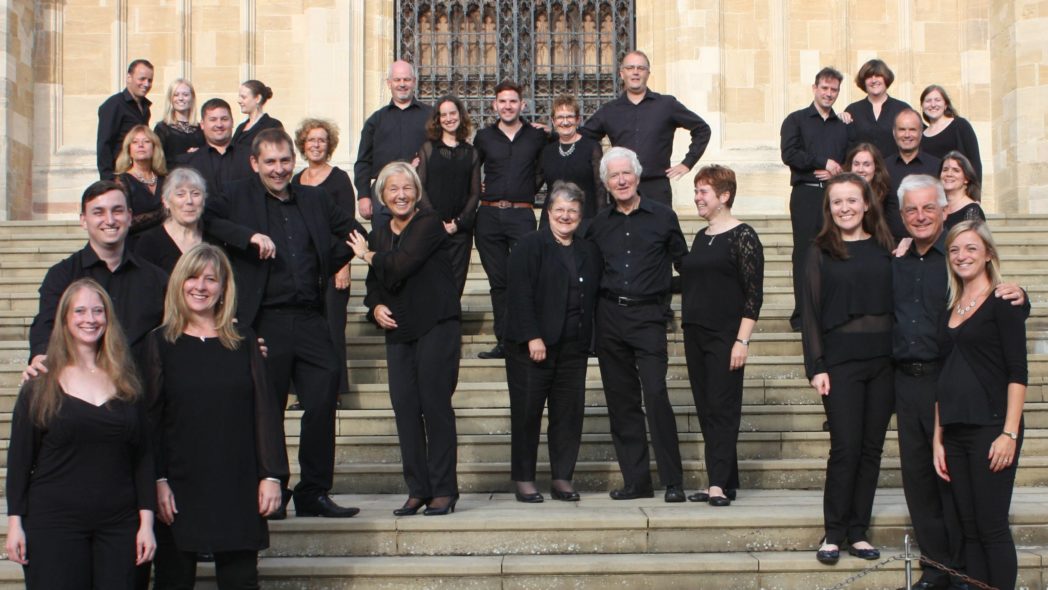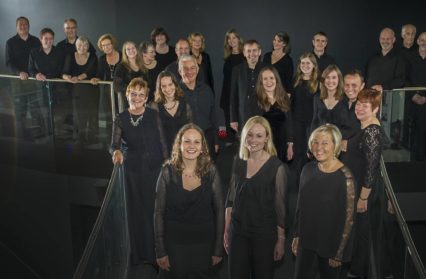Cath Barton attends Cantemus Chamber Choir’s Easter concert with period instrument ensemble Canzona, featuring J S Bach’s Mass in B Minor and finds it heartfelt but with room to grow.
One does not have to be a Christian to view the arrival of Easter as a hopeful time, with deliverance from a winter in which, this year especially, we have all walked in darkness for what feels like a very long time. A performance of J S Bach’s Mass in B Minor on Easter Saturday offered a prospect of light and joy, even though a chill wind was still blowing through the streets of Cardiff, and the yellow of the daffodils and a valiant little tree creeper in Bute Park were the only signs of spring.
In a pre-concert talk, John Hugh Thomas, founder and director for 46 years of the Swansea Bach Choir, spoke most engagingly about aspects of Bach’s writing of what is undisputedly his choral masterpiece. Wagner awarded Beethoven’s Seventh Symphony the epithet ‘the apotheosis of the dance’, but if it really is so the way was surely laid in Baroque music; Thomas illustrated how dance pervades Bach’s writing in every movement of his B Minor Mass, drawing our attention to a sarabande in the orchestral introduction to the Christe eleison and a jig played by the trumpets in the opening of the Gloria. The talk was an excellent foretaste of the work we were about to hear performed.

For Cardiff-based Cantemus Chamber Choir this concert was billed as the highlight of their 25th anniversary season. It was an ambitious choice for a semi-professional choir of (here) 29 singers, but the choir rose to the technical challenges of Bach’s complex counterpoint, demonstrating vocal agility in all parts and good attentiveness to conductor Huw Williams throughout this long sing. I thought the sound produced by the first sopranos was particularly good, being light and limber and lacking any of the intonation problems which often plague amateur choirs.
This setting of the Ordinary of the Mass – Kyrie, Gloria, Credo, Sanctus and Agnus Dei – goes way beyond the bounds of liturgical use, made up of what John Hugh Thomas described as 27 ‘dovetailed tableaux’. Completed not long before Bach’s death in 1750 it contains material recycled from a number of his earlier cantatas as well as his 1733 Missa Brevis and is a summation of his finest choral writing. Lasting at least two hours in performance it is a tremendous journey for singers, players and listeners alike. John Hugh Thomas was extremely helpful to those audience members who attended his pre-performance talk by pointing out key aspects of the ways in which Bach shaped the piece, so helping us understand more of the journey.
The excellent players of period instrument ensemble Canzona showed us all the different vibrant orchestral colours to which Thomas had referred in his talk, especially in the solo voice and instrument combinations. One can take a cynical view that Bach’s scoring of the bass solo, Quoniam tu solus sanctus, for horn and two bassoons was primarily because he was angling for a job he wanted in Dresden, this combination being more common there than in Leipzig where he was living an unhappy life. Whatever his motivation the result is a sublime pairing, with added touches of colour from cello and violone in counterpoint here to the bass of Stuart Young.
The two flautists, Christine Garratt and Eva Caballero, deserve special mention for their stylish playing, though it was a pity that in the duet for which the flutes provide the obbligato, tenor Alexander James Edwards failed to match his dynamics to those of soprano Kirsty Hopkins. When she sang in duet with alto Cathy Bell the musical give and take between the two singers made for a much more harmonious combination of voices.
The Kyrie and Gloria movements which Bach wrote for his 1733 Missa Brevis conclude with Cum Sancto Spiritu for chorus, taken in this performance at breakneck speed. Of course different conductors have their own preferences, and there is no such thing as the ‘correct’ tempo for any music. Here though, while the singers made a sterling effort, to me it felt too fast. There is a difference, subtle but real, between thrilling and rushed.
Within the Mass there are the two movements of the Credo which must surely be at the emotional heart of any performance of this work in Holy Week – the Crucifixus and Et resurrexit. Here again all credit to the singers, but the former movement lacked the starved tone which can induce a shiver in the listener and the latter needs, to my mind, a sense of wonder which evaporates with excess speed.
I was also bothered by the placement of the alto section towards the back of the choir, making it hard for those singers to project their sound adequately. There is no perfect solution to choir configuration, but when the altos moved forward for the six-part Sanctus and subsequent two-choir Osanna their sound came across better within the ensemble.
Cathy Bell’s singing of the Agnus Dei was clearly heartfelt, but the final chorus, Dona nobis pacem, was too loud too soon, so that when the trumpets joined the choir there was nowhere else to go.
Cantemus are an accomplished choir and they gave a competent performance throughout; that it never came fully alive is the responsibility of their conductor for failing to give the music sufficient room to breathe with more variation in tempi and dynamics. J S Bach’s music triumphed nonetheless and provided, in these difficult times, much-needed balm for the soul.
J S Bach: Mass in B Minor
Cantemus Chamber Choir
Huw Williams, Director
Canzona
Teresa Caudle, Leader
Kirsty Hopkins, Soprano
Cathy Bell, Alto
Alexander James Edwards, Tenor
Stuart Young, Bass
Dora Stoutzker Hall, Royal Welsh College of Music and Drama
31st March, 2018
Header photo of Cantemus at the RWCMD: Andrew Lewis-Jenkins
To find out more about the Cantemus Chamber Choir visit their website.
Cath Barton’s novella The Plankton Collector is due to be published in September 2018 by New Welsh Review under their Rarebyte imprint. She has been awarded a place on the 2018 Literature Wales Mentoring Scheme, to work on a collection of short stories inspired by the work of the sixteenth century Dutch artist Hieronymus Bosch.
You might also like…
Cath Barton attended a performance by the National Youth Training Choir of the National Youth Choir of Great Britain (NYCGB) at Dora Stoutzker Hall, featuring the talents of 11-18 year old singers.



 Enjoyed this article? Support our writers directly by buying them a coffee and clicking this link.
Enjoyed this article? Support our writers directly by buying them a coffee and clicking this link.







